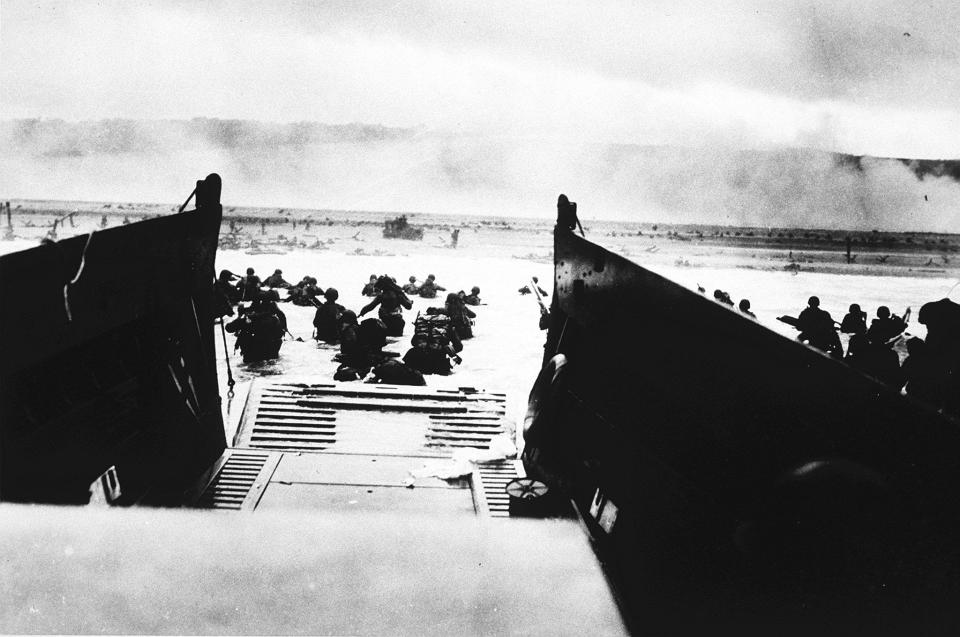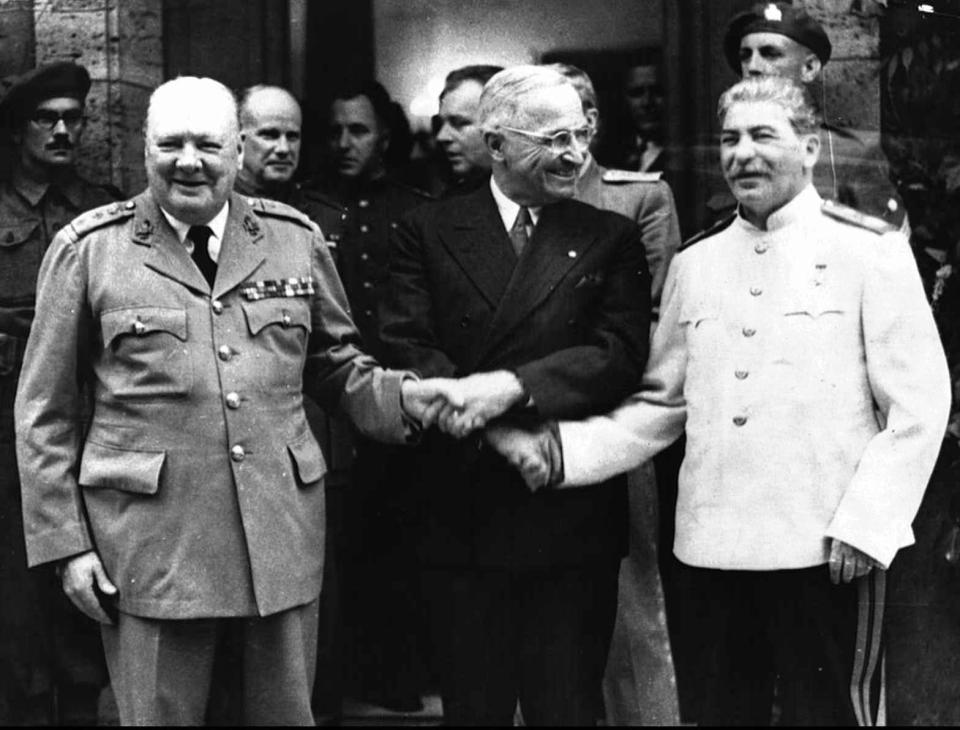When did World War II start? The deadliest international conflict explained.
World War II was the deadliest international conflict in world history, leaving almost 80 million people dead. Although the devastating impact of World War I tended to stick to the battlefield, fighting and bombings in World War II destroyed countries and economies across Europe.
Total cost of the destruction is estimated at over $1 trillion, causing many European nations to struggle in their recovery efforts following the conflict. World War II came after the rise in power of the Nazis in Germany under Adolf Hitler and included the deliberate murder of millions of Jewish people in the Holocaust.
But when exactly was World War II, and what caused the conflict that decimated Europe? Here's a short history lesson.

When was World World II?
World War II took place from 1939 to 1945 between the Axis powers — Germany, Italy and Japan — and the Allies — mainly France, Great Britain, the Soviet Union and the United States.
In many ways, the war was a continuation of World War I, or the Great War, which had taken place 20 years earlier from 1914 to 1918, according to History.com.
What started World War II?
World War I devastated Europe, leaving the continent destabilized and millions dead. This instability and the rise in power of Adolf Hitler, in an economically and politically unstable Germany, led to the start of another war in Europe.
When Hitler became Chancellor of Germany in 1933, there was already widespread resentment among the German people over the harsh terms imposed on their country in the Versailles Treaty which had ended the Great War. After rising to power, Hitler quickly consolidated power in the German government and changed his title to Führer, which translates to "supreme leader."
Hitler believed there was a superiority among the Germans, leading him to become obsessed with creating a supposedly superior “Aryan race.” To do this, he believed Germany needed to grow in order to give the German people the chance to expand. Hitler began to secretly rearm Germany, a violation of the Versailles Treaty.
From there, he became more bold, signing a treaty with Japan and Italy against the Soviet Union and occupying Austria in 1938. The following year, Hitler annexed Czechoslovakia, according to History.com.
Despite his increased aggression, his actions went mostly “unchecked” as France and Britain were not interested in another conflict, and the Soviet Union and the United States dealt with their own internal issues.
France and Britain would be driven to declare war on Hitler, however, once he invaded Poland.
Remembering Pearl Harbor: Here's how many people died in the 1941 attack
When did Hitler invade Poland?
Hitler invaded Poland on Sept. 1, 1939 as German forces bombarded the country by land and air. The invasion of Poland by Germany would become known as the blitzkrieg strategy, characterized by a bombardment to destroy communication lines, railroads and air capacity followed by an overwhelming land invasion.
Prior to the invasion of Poland, Hitler and Soviet leader Joseph Stalin signed the German-Soviet Nonaggression Pact. The pact allowed the Soviet Union to feel it would not face German aggression and have time to build up its army, while for Hitler it meant he could invade Poland without opposition.
A secret agreement in the pact, however, outlined details about how Germany and the Soviets planned to divide Eastern Europe. The pact, however, fell apart in June 1941 when Germany invaded the Soviet Union, according to History.com.
On Sept. 3, 1939, two days following Hitler’s invasion of Poland, France and Britain declared war on Germany. With this, War War II had officially begun.
How did World War II end?
A series of victories for the Allied powers between 1943 and 1945 led to the end of World War II, anchored most notably by D-Day. On June 6, 1944, the Allies began an invasion, landing with 156,000 American, Canadian and British soldiers on the beaches of Normandy, France.
In response to the invasion, Hitler moved the remainder of his troops to Western Europe, solidifying his loss in the East.
The Battle of the Bulge, which was Hitler’s attempt to divide American, French and British forces in their move toward Germany from December 1944 to January 1945, was the last main German offensive of the war.
The Allied land invasion of Germany and extensive bombardment of the country led to Germany’s surrender on May 8. Prior to the surrender, Hitler died by suicide on April 30.
Two months after the surrender of Germany, Allied leaders met in Potsdam, Germany to discuss peace settlements. Although fighting in Europe had ended, the conflict continued in the Pacific. On July 26, 1945, the U.S., China and Britain called for Japan's unconditional surrender.
Fears of a casualty heavy land invasion of Japan led President Harry Truman to order atomic bombs be dropped on Hiroshima and Nagasaki on August 6 and 9. The devastating impact of the bombs led the Japanese government to declare it would accept the Potsdam Declaration on August 15.
The official end to the war came Sept. 2, 1945 when U.S. General Douglas MacArthur accepted Japan's surrender.

How many people died in World War 2?
An estimated 60 to 80 million people died in World War II. Around 55 million civilians were killed during the conflict with the war leading to between 21 and 25 million military deaths. Additionally, 6 million Jewish people were murdered in Nazi concentration camps.Aside from the mass casualties, millions were left wounded and with their homes and property destroyed.
How many people died in the Holocaust?
The Holocaust was the deliberate persecution and murdering of Jewish people as well as the murdering of individuals with disabilities, those who were gay and members of other small ethnic groups. According to the National World War II Museum, that total is at least 11 million people.
Jewish people and other groups were targeted because the Nazis and Hitler did not feel they fell under what they believed was the supposed superior “Aryan race” of the German people.
Who has the most nuclear weapons? And can the US stop a nuclear attack?
Just Curious for more? We've got you covered
USA TODAY is exploring the questions you and others ask every day. From "Who was Winston Churchill?" to "How many people died on the Titanic?" to "Who was Jack the Ripper?" – we're striving to find answers to the most common questions you ask every day. Head to our Just Curious section to see what else we can answer for you.
This article originally appeared on USA TODAY: When was World War 2? Here's how and when the deadly conflict started.

